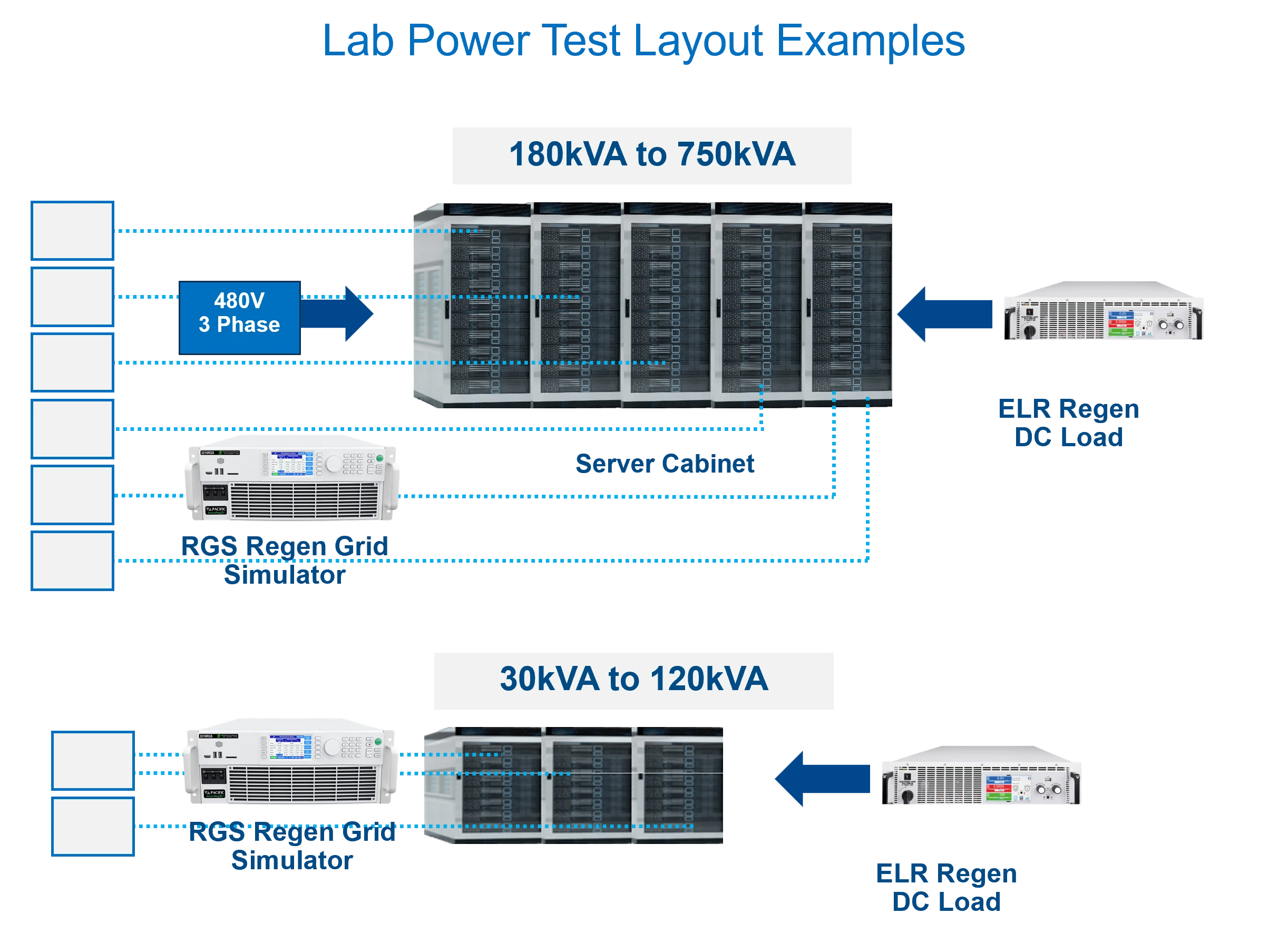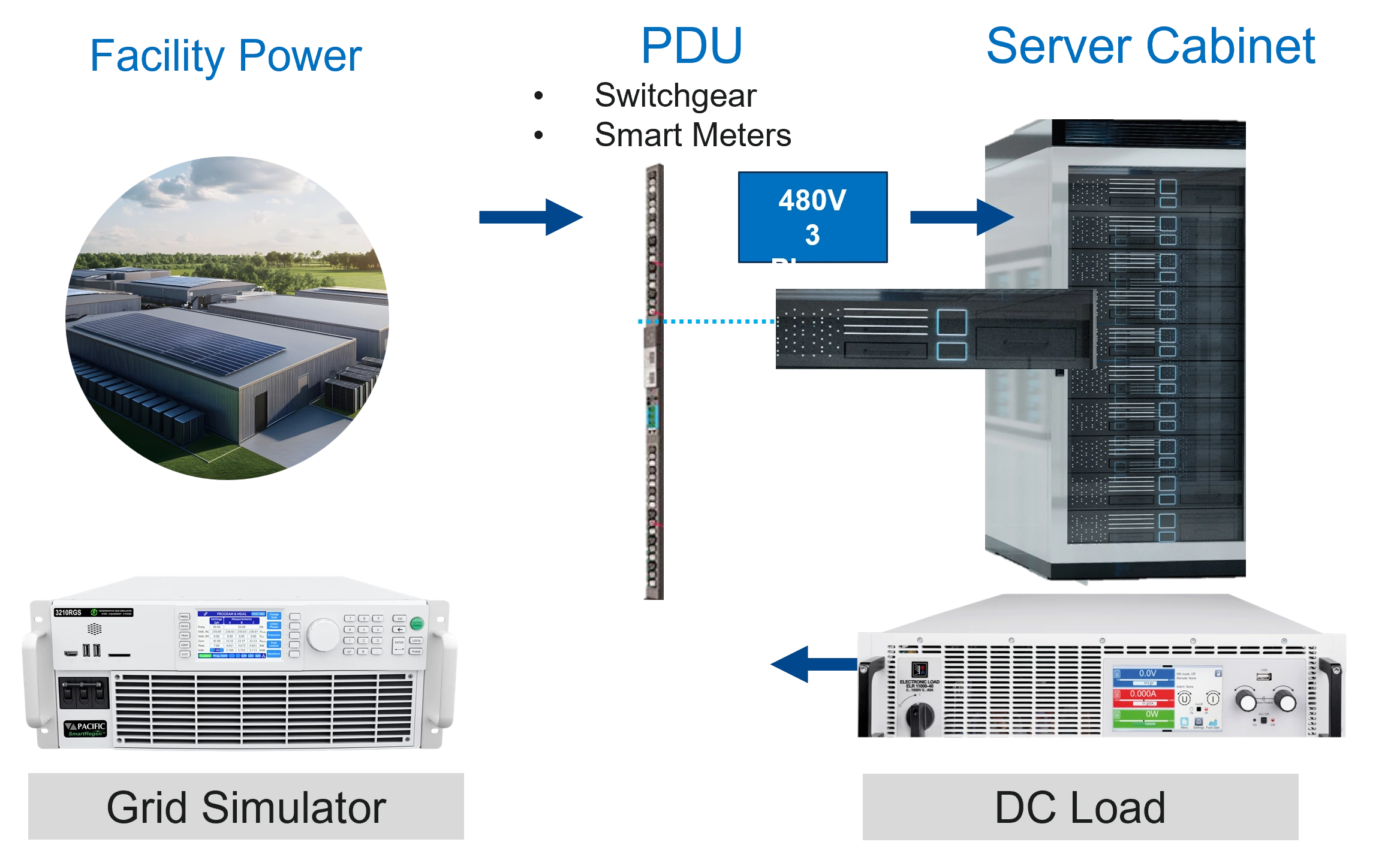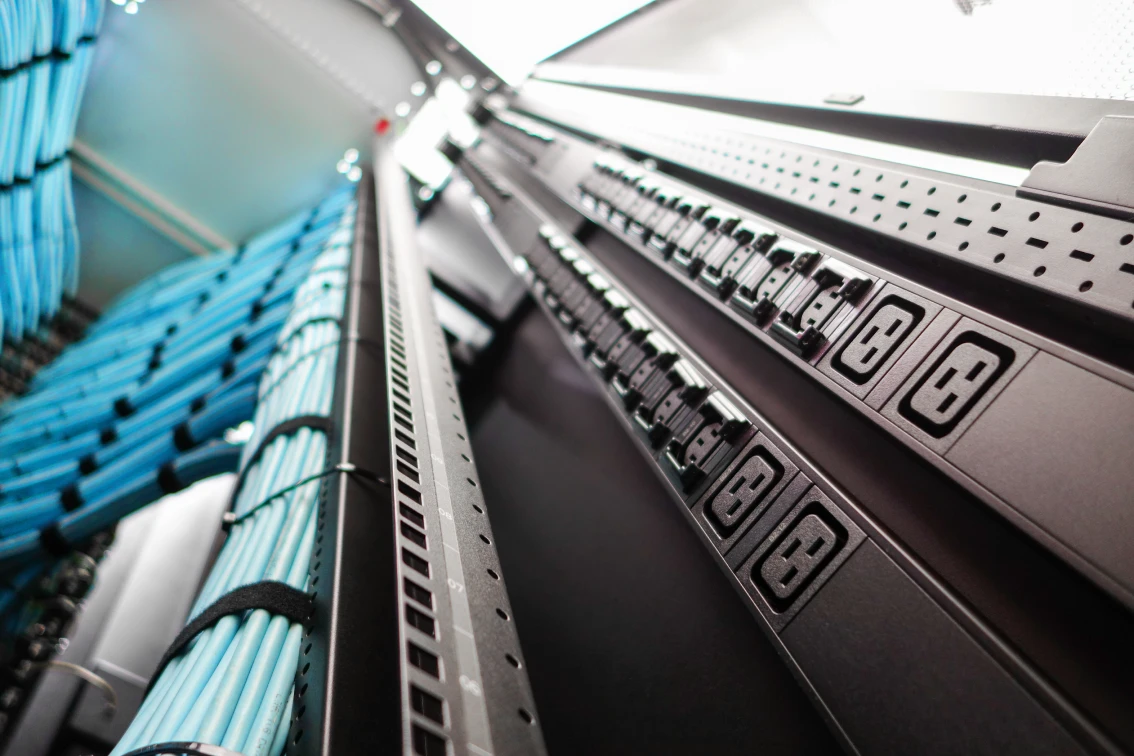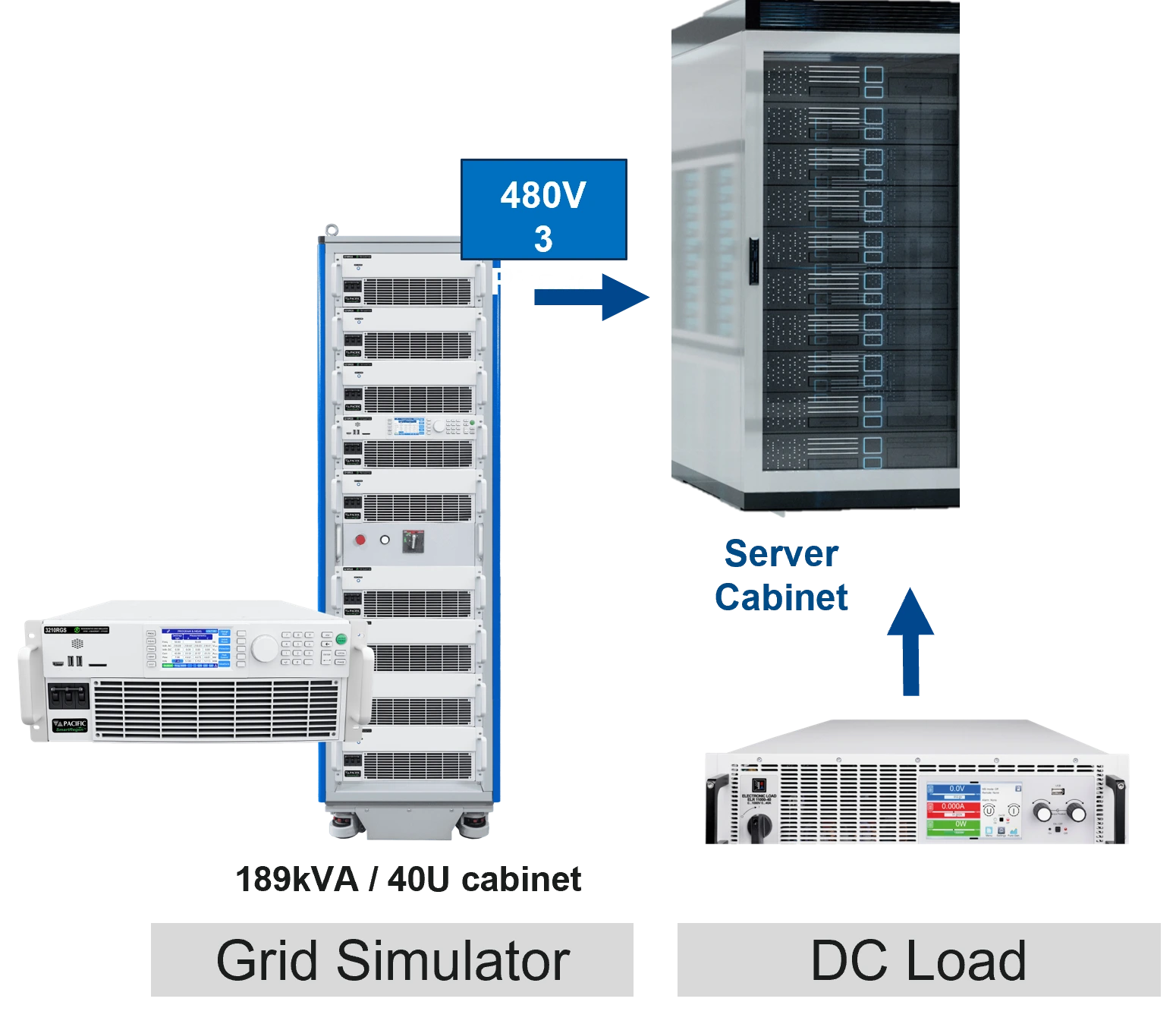


To meet the rapidly evolving needs of AI infrastructure and cloud-scale computing, data centers must adopt rigorous power system design and testing at every level—from the grid interface to the server rack. Programmable power sources and loads offer a scalable, controlled solution for simulating real-world power events, verifying system response, and meeting international compliance standards.

Use three-phase regenerative grid simulators to emulate the utility feed supplying full AI server cabinets. Synchronize multiple sources and loads to replicate real compute cycles and transient profiles. Measure overall system efficiency, input harmonics, and voltage stability during load changes or grid faults.


Simulate 12 V or 48 V distribution buses and backup battery systems. Use regenerative electronic loads to recreate fluctuating rack power demand while recycling energy to the grid. Evaluate redundancy, fault response, and overload protection under real-time compute power variations.


Validate AC-DC and DC-DC PSUs under programmable input and output conditions. Use AC power sources to emulate global grid standards and inject line transients, frequency drift, or harmonics. Apply dynamic load profiles using regenerative DC loads to characterize efficiency, hold-up time, and recovery behavior.


Many hyperscale data centers adopt high-voltage DC power bus distribution systems (e.g., 380V DC) for distribution efficiency to reduce power losses. Testing includes converter & rectifier validation under dynamic load conditions.


Validate PDUs, UPS systems, and battery energy storage (BESS) supporting critical compute infrastructure. Simulate grid disturbances—voltage dips, phase imbalance, frequency deviation—with programmable AC sources. Use electronic loads to perform endurance and redundancy testing during power transfer or backup events. In AI servers, telecom, and data centers, a BBU DC-DC converter interfaces between the battery backup unit (often lithium-ion) and the server’s DC bus.

Use three-phase regenerative grid simulators to emulate the utility feed supplying full AI server cabinets. Synchronize multiple sources and loads to replicate real compute cycles and transient profiles. Measure overall system efficiency, input harmonics, and voltage stability during load changes or grid faults.


Simulate 12 V or 48 V distribution buses and backup battery systems. Use regenerative electronic loads to recreate fluctuating rack power demand while recycling energy to the grid. Evaluate redundancy, fault response, and overload protection under real-time compute power variations.


Validate AC-DC and DC-DC PSUs under programmable input and output conditions. Use AC power sources to emulate global grid standards and inject line transients, frequency drift, or harmonics. Apply dynamic load profiles using regenerative DC loads to characterize efficiency, hold-up time, and recovery behavior.


Many hyperscale data centers adopt high-voltage DC power bus distribution systems (e.g., 380V DC) for distribution efficiency to reduce power losses. Testing includes converter & rectifier validation under dynamic load conditions.


Validate PDUs, UPS systems, and battery energy storage (BESS) supporting critical compute infrastructure. Simulate grid disturbances—voltage dips, phase imbalance, frequency deviation—with programmable AC sources. Use electronic loads to perform endurance and redundancy testing during power transfer or backup events. In AI servers, telecom, and data centers, a BBU DC-DC converter interfaces between the battery backup unit (often lithium-ion) and the server’s DC bus.
Our experts can help guide you to the perfect match for your specific testing requirements.